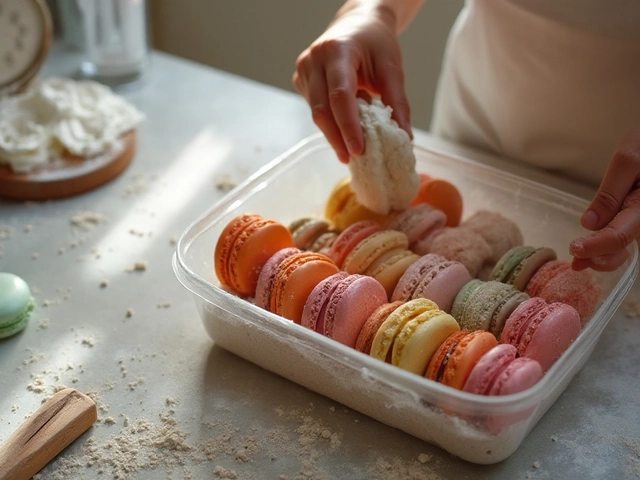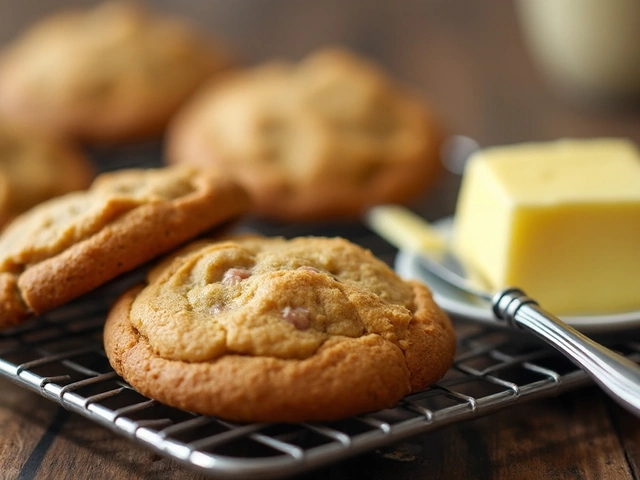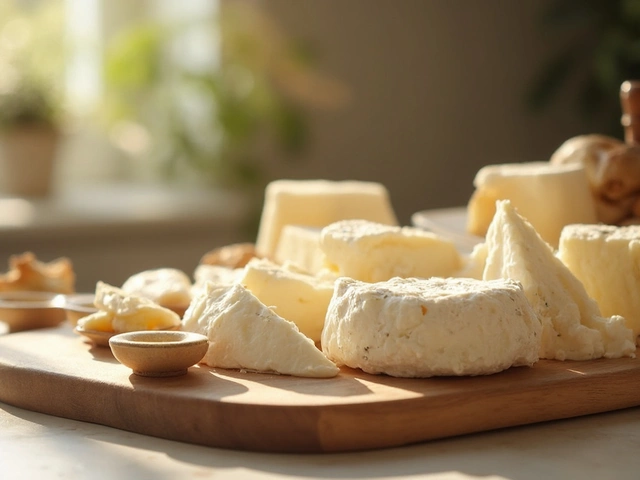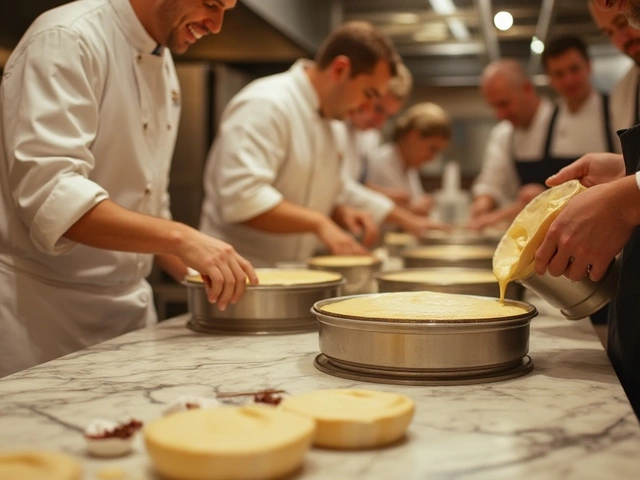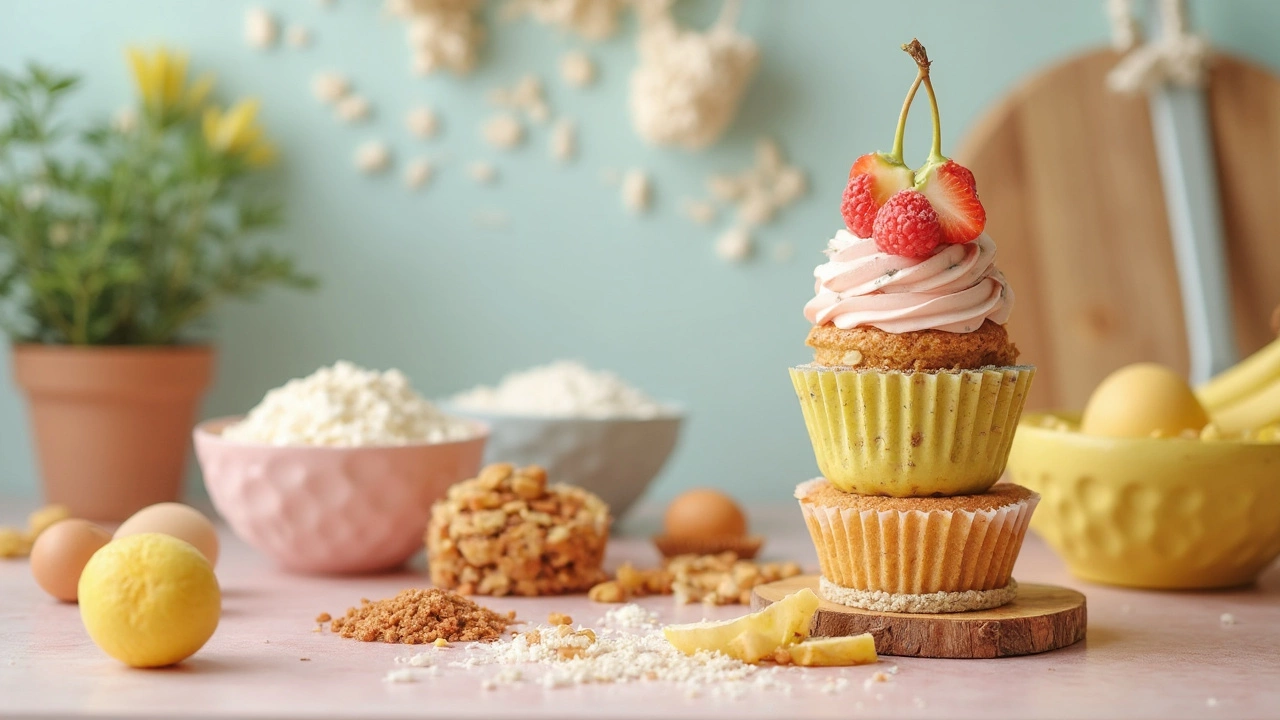
Ever stood in a grocery aisle, squinting at cake boxes, trying to figure out what’s actually gluten-free? You’re not alone. A ton of foods are naturally safe, but you’d never know it thanks to those tricky labels and myths that gluten is hiding everywhere.
Here’s a cool fact: some of the tastiest cake ingredients aren’t just weird substitutes—they're actually gluten-free by nature. Stuff like almond flour, coconut, eggs, cocoa powder, and even fruit puree all play nice with gluten-free diets. You don’t have to hunt down expensive mixes or settle for bland cakes when these basics are likely already in your pantry.
- What Gluten Actually Is (And Isn’t)
- Basic Swaps for Gluten-Free Cakes
- Shockingly Safe Ingredients for Gluten-Free Baking
- Tips for Flavor and Texture That Actually Work
What Gluten Actually Is (And Isn’t)
If you’ve ever wondered what gluten really means, you’re definitely not alone. Gluten is a protein found mostly in wheat, barley, and rye. That’s it. It’s not a mystery chemical or something hiding in every comfort food. For most people, gluten is harmless, but for anyone with celiac disease or gluten sensitivity, it’s best to steer clear.
There’s a quote I keep coming back to whenever this topic pops up:
“Gluten is simply a family of proteins found in grains such as wheat, rye, and barley. If something doesn’t come from those grains, it probably doesn’t have gluten.”
— Mayo Clinic
Don’t fall for the idea that oats, rice, potatoes, or corn always contain gluten. They’re naturally gluten-free, but can get cross-contaminated during processing. Always check the label if you’re baking for someone with allergies.
Take a quick look at the grains that do and don’t have gluten:
| Grain | Contains Gluten? |
|---|---|
| Wheat | Yes |
| Barley | Yes |
| Rye | Yes |
| Oats | No, but watch for contamination |
| Rice | No |
| Corn | No |
| Quinoa | No |
| Millet | No |
| Buckwheat | No |
The bottom line? Gluten-free doesn’t mean flavor-free or boring. Once you know what’s off-limits and what’s fair game, making gluten-free cakes actually gets way easier—and tastier. Let’s skip the confusion and focus on ingredients that really work.
Basic Swaps for Gluten-Free Cakes
Switching to gluten-free cakes sounds tricky, but honestly, you just need the right swaps. The cool thing? Some of the best options don’t taste weird or require a scavenger hunt at the health store. Here’s what really works:
- Almond flour: Ground almonds give a moist texture and rich flavor. A go-to for flourless chocolate cakes or dense carrot cakes.
- Oat flour: Regular oats are a no-go for gluten-free folks unless labeled “certified gluten-free.” But these oats, when milled, make soft, light cakes. Just double-check the label!
- Coconut flour: Absorbs lots of liquid—start with small amounts. Works well for spongy cakes, and you often need an extra egg.
- Rice flour: The mild flavor fits with classic vanilla or sponge cakes. White rice flour is lighter, brown rice brings in a stronger taste and more fiber.
- Potato starch or tapioca starch: They keep cakes fluffy and light. Usually, they’re not used alone but as a blend with other flours.
Even simple stuff you know—like cornstarch and cocoa powder—are naturally gluten-free. These help thicken up your batter and add structure.
| Swap Type | Main Flavor | Best For | Extra Tips |
|---|---|---|---|
| Almond Flour | Nutty | Dense cakes, brownies | Makes cakes super moist |
| Oat Flour* | Mild, oat | Quick breads, muffins | Choose certified gluten-free |
| Coconut Flour | Coconut | Sponge cakes, cupcakes | Absorbs lots of moisture; add eggs |
| Rice Flour | Neutral | Vanilla, chiffon cakes | Mix with starch for fluffiness |
Here’s another tip: most ready-mixed “all-purpose gluten-free flours” are actually blends of these ingredients. You can totally mix your own at home—just combine two or three, and balance with a starch for lift.
The biggest mistake? Swapping wheat flour one-to-one for something like coconut flour without adjusting the liquids. Coconut flour is super thirsty, while almond flour adds fat, so recipe tweaks help a ton.
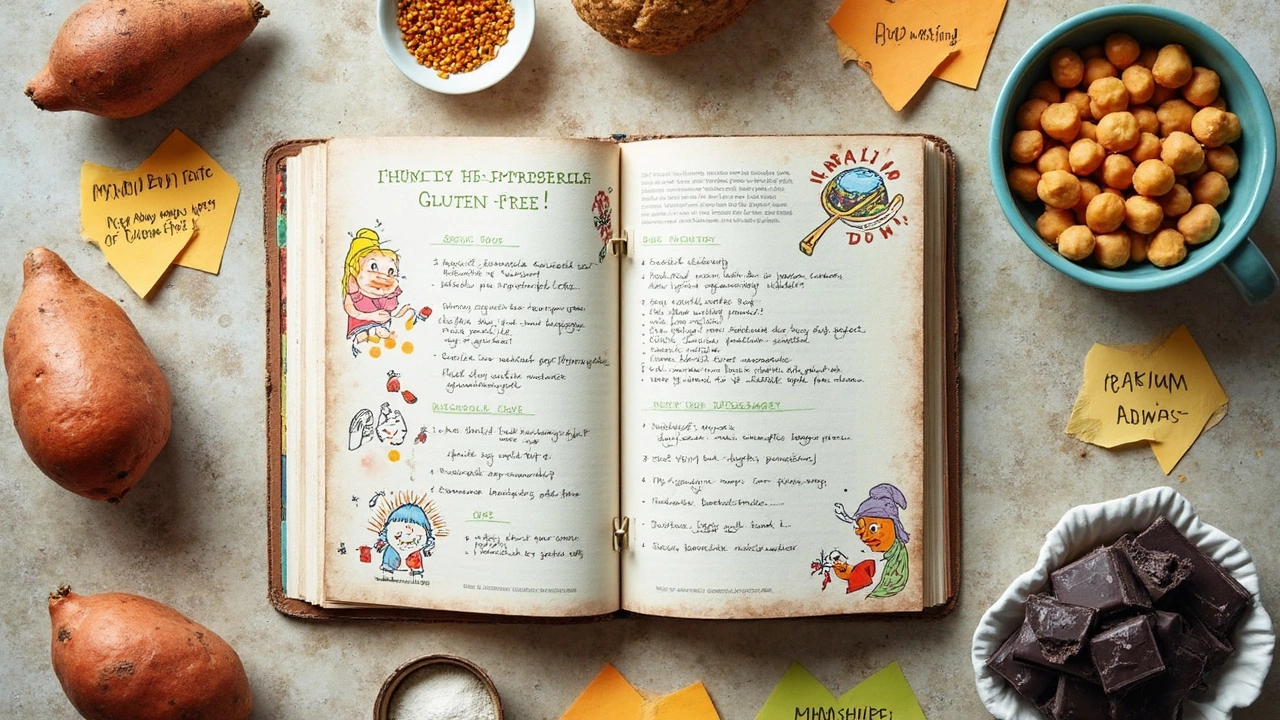
Shockingly Safe Ingredients for Gluten-Free Baking
Think gluten-free cakes need rare or pricey flour? Nope. Some of the best stuff for baking is naturally gluten-free, easy to find, and actually tastes great. Let’s break down what you can use.
- Almond flour: This nutty flour is made from ground almonds. It’s super common in gluten-free cake recipes because it adds great texture and a nice protein boost. In 2024, the market for almond flour grew by 12% as more home bakers discovered its versatility.
- Coconut flour: Low in carbs and rich in fiber, this flour can be tricky since it absorbs lots of liquid, but it’s totally gluten-free. Combine it with eggs or extra moisture to keep cakes soft.
- Cornstarch and potato starch: These are often brushed off as only for thickening, but they're perfect for soft, light cakes, like sponge or chiffon styles.
- Cocoa powder: Pure cocoa powder never has gluten. Melt it or mix it into your batter for chocolate cakes or brownies. Just don’t buy those baking mixes that sneak in wheat fillers.
- Arrowroot powder: This plant-based thickener helps bind cakes and makes them light. It’s in a bunch of gluten-free recipes but almost no one talks about it. Totally safe—and handy for fudgy cakes, too.
- Chickpea flour: Yes, it sounds odd, but chickpea flour (also called besan) creates a shockingly good, slightly dense texture in cakes, and it’s a staple in gluten-free baking in India.
- Eggs: So basic, right? They don’t just hold a cake together—they add moisture and structure without bringing gluten near your recipe.
- Unsweetened applesauce and mashed bananas: Use these for moisture and sweet flavor. Both are gluten-free and can lower the fat content if you swap them for oil or butter.
Still feeling a little skeptical? Here’s a quick way to see what’s actually gluten-free when you’re out shopping or pulling random ingredients from your shelf:
| Ingredient | Gluten Content | Common Use in Cakes |
|---|---|---|
| Almond Flour | None | Main flour, adds density |
| Cocoa Powder | None | Flavor, color |
| Chickpea Flour | None | Binding, structure |
| Potato Starch | None | Light, fluffy texture |
| Eggs | None | Binding, richness |
| Bananas/Applesauce | None | Moisture, sweetness |
The most surprising thing? These ingredients aren’t weird to use—they’re already favorites in a lot of classic cakes. If you’re new to the gluten-free cakes scene, start with these basics and you’ll notice you’re not missing out on flavor or texture. Just check labels to make sure nothing is processed with wheat, and you’re set.
Tips for Flavor and Texture That Actually Work
So you want your gluten-free cakes to taste good, not just "good for gluten-free." Texture and flavor really are the deal-breakers. The main challenge? Gluten normally does all the chewy binding work in cakes, but when you ditch it, things can get crumbly or bland fast. Let’s keep that from happening.
- Mix up your flours. Straight substitutions with just one gluten-free flour can make your cake dry or dense. Try combos, like almond flour with cornstarch, or rice flour with a bit of coconut flour. This helps mimic that classic cake feel.
- Use binders. Without gluten, you need something to help your cake hold together. Eggs do a lot of heavy lifting, but you can also toss in a spoonful of psyllium husk, ground chia seeds, or flaxseed meal mixed with water (think "flax egg").
- Add moisture. Gluten-free flours suck up liquid, so you almost always need more wet stuff. Sour cream, yogurt, applesauce, or even mashed bananas make a world of difference. This keeps your cake soft instead of sandy.
- Boost the flavor. A pinch of salt, extra vanilla extract, or citrus zest goes a long way. Gluten-free cakes can taste flat, but little upgrades like espresso powder in chocolate cakes or almond extract in vanilla cakes wake everything up.
- Let it rest. Once you’ve mixed your batter, give it five or ten minutes before baking. This lets the flours hydrate and thickens up your mix so it bakes up better.
If you’re wondering how moisture and structure compare with or without gluten, check out these numbers from side-by-side cake tests:
| Cake Type | Avg. Moisture (%) | Avg. Crumb Firmness (Newtons) |
|---|---|---|
| Regular (with gluten) | 44 | 1.8 |
| Gluten-Free Blend | 49 | 2.7 |
| Gluten-Free + Yogurt | 52 | 2.1 |
Notice the gluten-free + yogurt cake actually comes out even moister than the regular one. Small recipe tweaks really pay off.
One last thing: always taste your batter (unless you’re using raw eggs and feeling careful). Sometimes gluten-free flours taste a little "off" before baking, so it’s a good moment to adjust sugar or add another flavor hit if you want.
With a little practice and these tricks, even picky friends won’t guess your cake skipped the gluten. And trust me, even Jonas—who’s as stuck on classic chocolate cake as anyone—has been fooled more than once.

